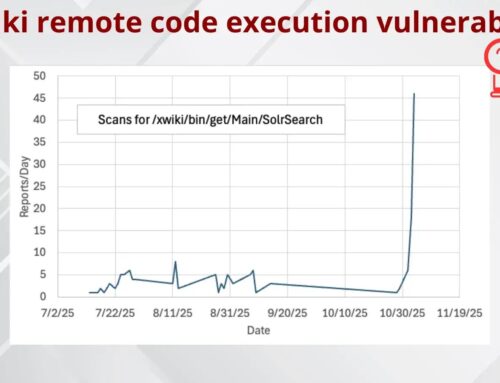
Hackers Sabotage Iranian Ships Using Maritime Communications Terminals in Its MySQL Database
The maritime industry, a cornerstone of global trade and logistics, faces an increasingly sophisticated threat landscape. Critical infrastructure, once thought insulated by traditional security perimeters, is now squarely in the crosshairs of advanced persistent threat (APT) actors. A recent cyberattack targeting Iran’s maritime communications infrastructure serves as a stark reminder of this evolving danger. This incident, which unfolded in late August 2025, crippled dozens of Iranian vessels by severing their vital satellite links and navigation aids, demonstrating a profound shift in attack methodologies from individual ship targeting to strategic supply chain infiltration.
The Anatomy of a Maritime Cyber Sabotage Campaign
Unlike conventional attacks that might focus on individual ships—a logistically insurmountable task across vast international waters—this campaign adopted a far more strategic approach. The attackers did not attempt to compromise each vessel’s on-board systems directly. Instead, they identified and infiltrated a critical chokepoint: the IT provider. Specifically, the cyber offensive penetrated
Fanava Group, an Iranian IT firm responsible for providing satellite communication services to Iran’s sanctioned tanker fleets.
This supply chain attack vector allowed the adversaries to achieve widespread disruption with a single, well-executed breach. By compromising Fanava Group’s central systems, likely their operational databases powering communication terminals, the attackers could propagate their sabotage across a broad spectrum of Iranian maritime assets without needing physical access or individual network exploits on each ship. This highlights a critical vulnerability: the increasing reliance of specialized industries on third-party IT service providers, who often become attractive targets for nation-state actors or highly capable cybercriminals.
The Crucial Role of MySQL Database Compromise
While the initial reports focused on the disruption of maritime communications, the underlying mechanics of the attack point to a specific and potent exploit: the compromise of Fanava Group’s MySQL database. Databases, especially those handling critical operational data, personnel information, or configuration settings for networked devices, are high-value targets. In this scenario, it is highly probable that the attackers gained unauthorized access to Fanava Group’s MySQL database, which likely housed:
- Configuration details for satellite communication terminals on Iranian vessels.
- Authentication credentials for these terminals.
- Operational parameters or firmware update mechanisms for the systems.
By manipulating or corrupting data within this central database, the attackers could effectively disable communication links, disrupt navigation systems, or even implant malicious backdoors that could be triggered remotely. This illustrates the catastrophic impact of a database breach, transforming a data repository into a weapon for operational sabotage. The specific vulnerability or methodology used to penetrate the MySQL database is not yet fully disclosed, but common vectors include:
- SQL Injection attacks (though more robust applications often mitigate this).
- Exploitation of known vulnerabilities in MySQL or its associated management tools (e.g., outdated versions, unpatched CVEs).
- Weak or default credentials.
- Privilege escalation after an initial foothold gained through other means (e.g., spear-phishing or supply chain software compromise).
It is plausible that the attackers leveraged a combination of social engineering and technical exploits. For instance, an initial breach might have led to the compromise of administrator credentials, providing direct access to the database.
CVEs Related to MySQL Vulnerabilities and Supply Chain Attacks
While specific CVEs for this incident have not been published, there are numerous past vulnerabilities in MySQL and general supply chain attack vectors that underscore the risks:
- MySQL Vulnerabilities: Older versions of MySQL have been susceptible to various weaknesses, from privilege escalation to remote code execution. For example, issues like CVE-2016-6663 (privilege escalation in MySQL) or CVE-2020-28268 (arbitrary file read vulnerability in MySQL Server) highlight the importance of timely patching and secure configurations.
- Supply Chain Attacks: This broad category encompasses a wide array of methods where attackers compromise a trusted vendor or software to reach their ultimate target. Notable examples include the SolarWinds attack and the Kaseya VSA compromise. While not specific CVEs for this type of attack, they illustrate the inherent risks. Any vulnerability in the software development lifecycle or IT infrastructure of a service provider can become a conduit for compromise.
Remediation Actions for Maritime and Critical Infrastructure Providers
This incident offers invaluable lessons for all organizations, particularly those involved in critical infrastructure or managing sensitive data for third parties. Proactive and comprehensive cybersecurity measures are paramount.
Immediate and Strategic Remediation Steps:
- Isolate and Segment: Immediately isolate affected systems and networks. Implement robust network segmentation to contain potential breaches and limit lateral movement.
- Incident Response Plan Activation: Fully activate and execute a pre-defined incident response plan. This includes forensic analysis, eradication of threats, recovery of systems, and post-incident review.
- Database Security Hardening:
- Patching: Ensure all database servers (MySQL in this case), operating systems, and associated applications are running the latest security patches. This includes regular auditing for CVE-IDs relevant to your versions.
- Strong Authentication: Enforce strong, complex passwords and multi-factor authentication (MFA) for all database access, especially for administrative accounts.
- Principle of Least Privilege: Grant users and applications only the minimum necessary permissions to perform their functions.
- Regular Auditing and Logging: Implement comprehensive database auditing and log analysis to detect unusual access patterns or suspicious queries. Integrate these logs into a Security Information and Event Management (SIEM) system.
- Database Firewalls: Deploy database firewalls or Web Application Firewalls (WAFs) to filter and inspect database traffic.
- Supply Chain Security Audits: Conduct thorough cybersecurity audits of all third-party vendors and service providers, especially those with access to critical systems or data. Implement strict contractual agreements regarding security posture and incident reporting.
- Vulnerability Management: Establish a continuous vulnerability scanning and penetration testing program for all internal and external-facing assets, including databases and communication infrastructure.
- Employee Training: Conduct regular and realistic cybersecurity training for all employees, focusing on phishing awareness, social engineering tactics, and secure coding practices for developers.
- Backup and Recovery: Implement robust, off-site, and immutable backup and recovery procedures for all critical data and systems to ensure business continuity even after a sophisticated attack.
Tools for Enhanced Security:
Implementing the recommended remediation actions often requires leveraging specialized tools. Below is a selection of categories and examples:
| Tool Category Name | Purpose | Example Tools / Technologies |
|---|---|---|
| Vulnerability Scanners & Pentesting | Identify and assess security weaknesses in applications, networks, and databases. | Tenable Nessus, Qualys, Burp Suite, Metasploit |
| Security Information and Event Management (SIEM) | Aggregate and analyze security logs from various sources to detect threats. | Splunk, IBM QRadar, Microsoft Sentinel, Elastic SIEM (ELK Stack) |
| Database Activity Monitoring (DAM) / Database Firewalls | Monitor and control database traffic, detect suspicious activity, and prevent unauthorized access. | Imperva, IBM Security Guardium, McAfee Database Security |
| Endpoint Detection and Response (EDR) / XDR | Monitor and respond to threats on endpoints and across the enterprise IT environment. | CrowdStrike Falcon, SentinelOne, Microsoft Defender for Endpoint |
| Application Security Testing (AST) – SAST/DAST | Identify security vulnerabilities in application code during development (SAST) and runtime (DAST). | Checkmarx, Veracode, OWASP ZAP (DAST) |
| Network Segmentation & Micro-segmentation | Control traffic flow between network segments to limit lateral movement. | Cisco DNA Center, VMware NSX, Illumio |
| Multi-Factor Authentication (MFA) Solutions | Add an extra layer of security beyond passwords for user authentication. | Okta, Duo Security, Microsoft Authenticator |
Conclusion
The cyberattack on Iran’s maritime communication infrastructure, enabled by the infiltration of Fanava Group’s MySQL database, underscores a critical lesson: robust cybersecurity is no longer an IT department’s isolated concern but a fundamental aspect of operational resilience. For the maritime sector and other critical infrastructure, the interconnectedness of systems and reliance on third-party providers create new attack surfaces. Protecting core assets like databases, rigorously vetting supply chain partners, and maintaining an agile incident response capability are paramount. As adversaries continue to innovate, a proactive, multi-layered defense strategy with continuous vigilance is the only way to safeguard vital global operations from sophisticated cyber sabotage.





